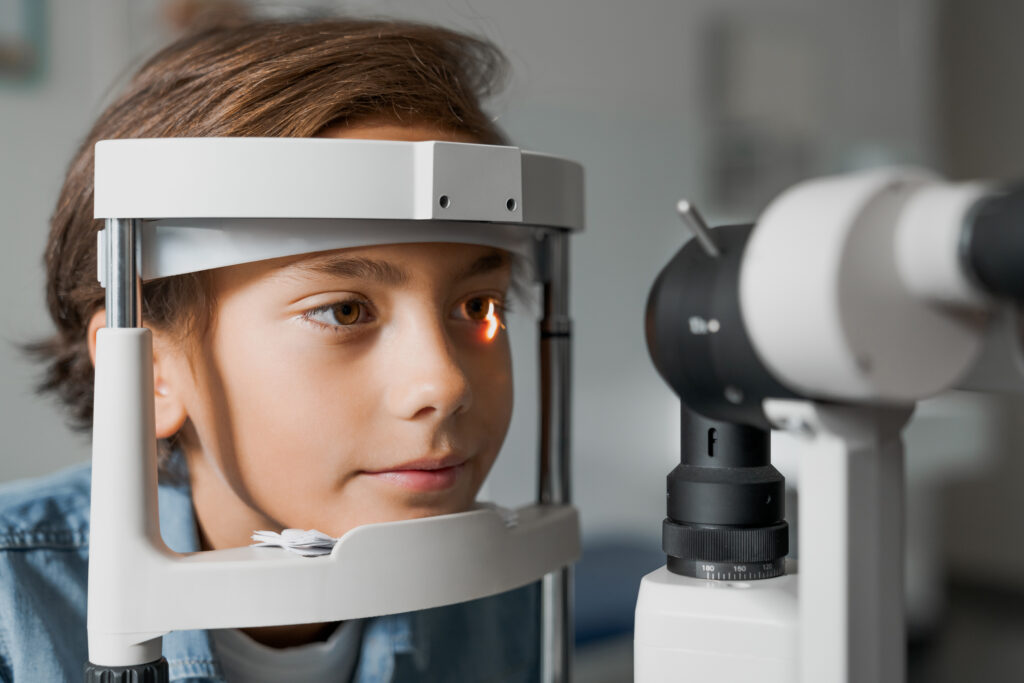In our practice, we specialize in Ortho-K, and two aspects are critical to our success: 1) the use of fitting sets in the contact lenses we select for our patients and 2) specialized scheduling. We need to keep focused on the patient experience, and that includes accommodating the increased time and commitment needs of our busy patients who elect to do OrthoK.
In my office I have several fitting sets that I employ to get an initial assessment of the relationship between a given OrthoK lens design and the cornea. The fitting sets that I employ are compact and take up very little space in our busy office. (I keep them under my desk in my main exam room.) These sets are relatively small and contain 20-100 OrthoK lenses, often stored dry in flat packs.
Fitting sets can also be used as “Wow!” sets. Often, when doing an assessment for a child with the parents present, I will select the best fit for the child and place the OrthoK lens on the child. While the child sits with their eyes closed, I will discuss with the parents the pros and cons of OrthoK, along with risks, benefits, etc. After 20-30 minutes of discussion, I remove the retainers from the child and do a quick visual assessment. About 95% of the time, there is a significant improvement in the child’s vision, often getting to a full 20/20 after just 20-30 minutes. This a “Wow!” moment during the consultation, and it really brings home the efficacy of this exciting specialty.
Our standard intake procedure for OrthoK is to conduct the lens fitting in steps. We begin with a consultation during which we explain orthokeratology and the measurements we will take.
Next, I design, order, and fit the patient in a two-step process. Usually, this process takes roughly a week from the evaluation and ordering to the first night of wear.
Typically, this is convenient for both the doctor and the patient. During the follow-up, if the fit is suboptimal, I will need to order new product for the patient. However, there are cases when this does not work for the patient, and a compressed timeline is required.
Be Flexible in Scheduling
I recently saw an out-of-town patient who had heard that we offer OrthoK in our office. This patient had driven close to one and a half hours to come to our office as they could not find anyone in their area offering this specialty. I offered to make arrangements at a local hotel, and they declined, saying they could stay with a friend in a neighboring city 15 minutes away.
Scheduling a week from the evaluation and ordering to the first night of wear is typically very convenient for both the doctor and the patient. However, given our compressed timeline, a week was much too long. I elected to use a fit set for this patient, compressing a three-week timeline into just three days.
The patient arrived for a Thursday evening appointment that my staff scheduled as the last patient of the evening. My technical staff collected essential data, including visual acuity, current glasses prescription, health history, and, most importantly, several high-quality topographies of each eye. After the usual explanation of how orthokeratology works, what to expect during the initial process, risks, benefits, costs, and outcome, we were ready to go.
How We Schedule OrthoK Patients
OrthoK patients make up about 10% of my busy optometric practice, and you might expect this to be difficult to integrate. However, yearly exams for OrthoK patients and six-month follow-ups are relatively easy to mix into our schedule, as they take up about the same amount of time as a normal exam or a toric contact lens follow-up. The exception to this is the initial OrthoK consultation. Always schedule your initial OrthoK evaluations at the end of the day. It leaves more time for explanations, and patients are more likely to say “yes” in a relaxed environment.
Go with Tried-and-True Fitting
With this patient, I went with the tried-and-true method of trial fitting. The process of fitting is very straightforward with an OrthoK lens design, and I began with the suggested parameters from the fitting guide. After evaluating the fit, I made a tweak in my fitting from suggested parameters as the cornea lens relationship appeared “steep.” I changed the fit to what appeared, by fluorescein, to be the optimal cornea/lens relationship.
[Note: When reading post-wear topographies, I prefer to use tangential maps. Be sure to change the range from 10D to 4D or even 2D.]
My staff then spent time reviewing paperwork, signing forms, and teaching the patient how to handle the retainers at home. I told them I would see them in the morning, and the patient left in an upbeat mood.
Use Fitting Sets to Get the Fit Just Right
The next morning, the out-of-town patient was my first of the day. They appeared happy when they walked through the door, and my mood was guardedly optimistic! My staff did the prep work including visual acuity and several topographies for each eye. My staff popped into my office to give me the rundown, and the results were not exactly perfect. The right eye was great for day one 20/20. The left eye was lackluster at 20/30, and they were complaining about halos.
Upon inspection of the topographies, the right was well centered, and the treatment zone looked good. The left eye was low, suggesting the retainer was not fitting properly. Normally, I would have had to order a new retainer and wait a week or so for the new one to come in. However, this was not an option for this out-of-town patient.
Using the fit set, I was able to easily fix the problem by making the appropriate changes and sent them off with the new retainer. The next day they returned to the office for a quick follow-up. My changes worked well, and they were a solid 20/20 in each eye with a combined acuity of 20/15.
Using a fit set for this out-of-town patient made the process quicker and more efficient. It saved the patient time, as well as the doctor and the staff. It also allowed an out-of-town patient to get a service not available in their hometown.





